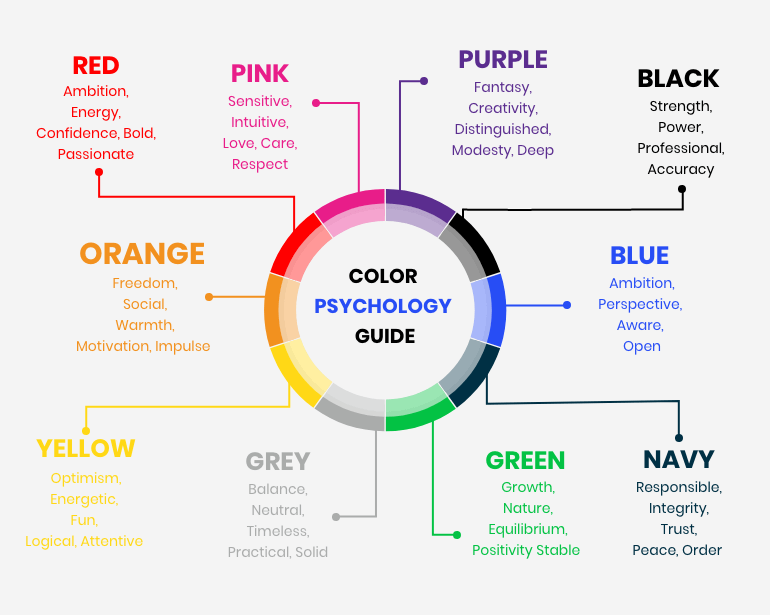
Let’s Wheel Back In Time
Do you know who invented the widely known Color Wheel? It was none other than Sir Isaac Newton who invented it in 1666 and mapped the color spectrum onto a circle. Little did he know then that it would be one of the major parameters that would be used to map the color theory guidelines. When designers, artists and painters create a combination of colors that suit the human eye, it’s called Color Harmony and one can use a color wheel to find color harmonies by using the rules of color combinations. Here goes the essential rules of color theory for designers:
Complementary
Two colors that are on opposite sides of the color wheel resulting in brighter and more prominent appearance.
Monochromatic
Three shades, tones and tints of one base color to design projects for a harmonious look.
Triadic
Three colors that are evenly spaced on the color wheel making it more versatile and vibrant.
Tetradic
Four colors that are evenly spaced on the color wheel for bold and accented application.
Sticking To The Principles
So the next chapter begins by emphasising on the foundation of Color Principles. It may not seem vast in theory but take it from us that these basics of colour theory are not to be tampered with. You will be amazed at how these principles ensure that the end result is spectacular and not just a mere riot of colors. See the three types of colors below:
Primary Colors
The Primary Colors Red, Green and Blue in the RGB color wheel when added together create pure white light. In the RYB color wheel, (Red, Yellow, blue) primary colors are colors that can’t be mixed from other colors.
Secondary Colors
Cyan, Magenta and Yellow are the 3 secondary colors in the RGB color wheel. Mix Red and Green to make Yellow, Green and Blue to make Cyan and Blue and Red to make Magenta. In the RGB color wheel, the secondary colors are Purple, Orange, and Green.
Tertiary Colors
Tertiary colors are colors made by combining a secondary color with a primary color. In the RGB color wheel, the tertiary colors are Red-Orange, Yellow-Orange, Yellow-Green, Blue-Green, Blue-Violet and Red-Violet.
Apply Colors To Business
Now that you have an understanding of how minutely colors come together, we will proceed further to discuss how a brand can maximize their reach with the same. Our brains pick different vibrations when we see different objects and relate them to certain colors. From establishing brand recall with correct logo colors on social media to launching your promotional campaigns, a smart design approach can help you boost your brand. By strictly following the basics of colour theory we enhanced the corporate website for one of the top FMCG companies HCCB. Check out the symmetry of color aesthetics for better understanding.
Be A Brand Of The Masses
Brainstorming is found to be really useful when it comes to choosing the right colors to tell your brand’s story. As we have noticed earlier that colors evoke emotions and motivate consumers psychologically, you can make a market penetration with colors that depict warmth, happiness and assurance. If you dig deeper, you will see how a color theory guidelines focus on having the palette right for keeping the many elements together. Do spare some of your time to see how following the fundamentals of color theory helped us in creating groundbreaking branding services for Lykis Hairs Relaxer.

The First Point Of Contact
Have you ever thought that whether it's a product or a brand, the first thing that a consumer is drawn to is the hero color. One should use the power of color theory guidelines for user interface design while designing the visual connect for their target audience. Define your color choice on the basis of products that you are selling and the kind of market that you're catering to.
The Only Scheme You Need
Choosing your color scheme is the key to get the initial mileage for your brand. A meticulous selection of color schemes would be able to influence your consumer base and make them interested in trying out your products. Also keep in mind the kind of positioning you are looking for in the market. Your brand should not look misplaced or misconstrued as expensive or cheaper than it really is. Few long hours with your marketing guy and the fundamentals of color theory you can curate the field research that would help you choose the color scheme that justifies your brand identity.
Take The Simpler Route
Developing an advanced color theory which will work for you needs a keen eye and few experienced hands. Trusting professional players for phasing out the groundwork is the best suggestion that you take. We are one of the best website design agencies that helps brands to stand out in the market. See another fine example of branding and packaging here for Yala that showcases our excellence in design DNA and marketing instincts. Being preferred by our trusted patrons, we are transforming the journey of many global brands everyday.

